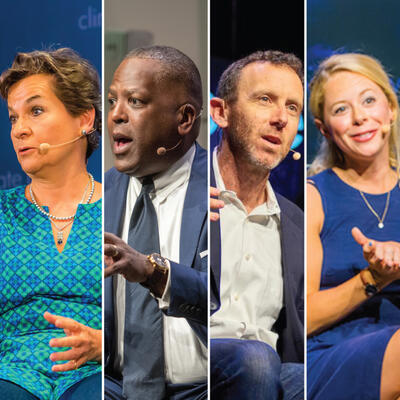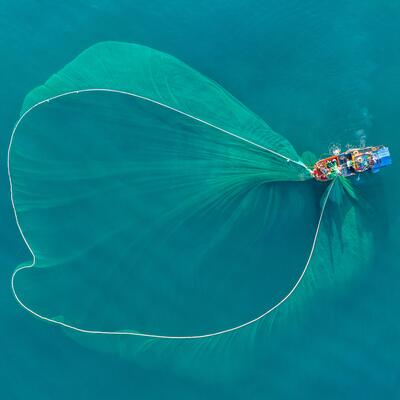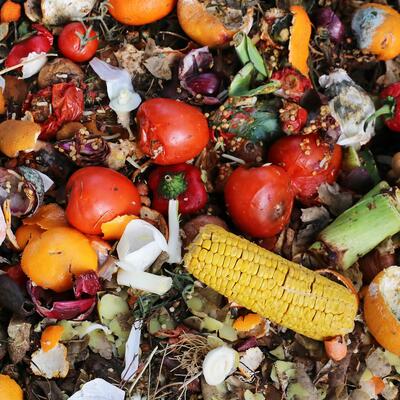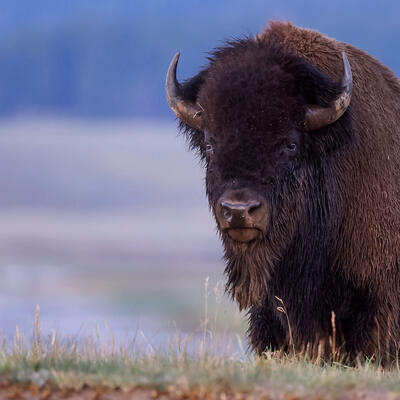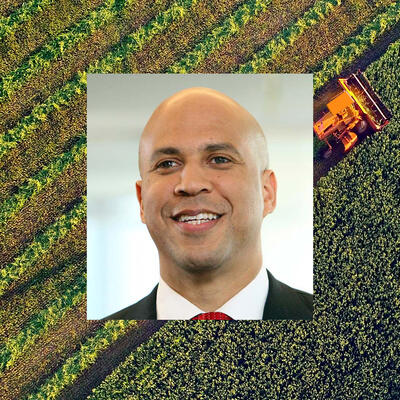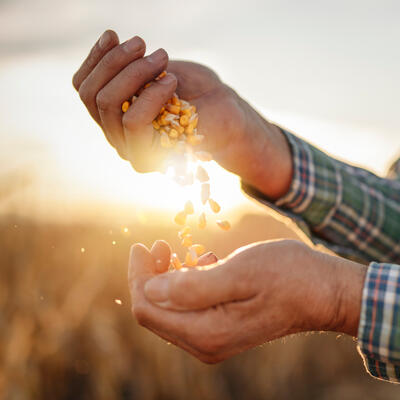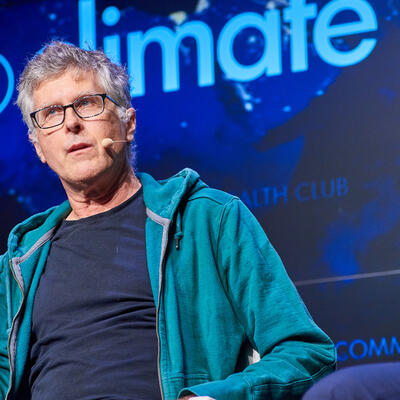
The New Surf and Turf
Guests
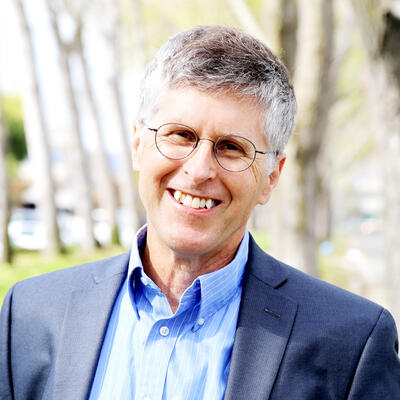
Patrick O. Brown

Carolyn Jung

Mike Selden
Summary
Production of animal protein is producing vast amounts of climate-eating gases. But a new generation of companies are creating innovative food products that mimic meat and have much smaller environmental impacts. Some of this mock meat is derived from plants with ingredients designed to replicate the taste and pleasure of chomping into a beef hamburger. Others are growing meat cells that come from a laboratory and not a cow. Will those options wean enough people from burgers and chicken wings to go mainstream?
Full Transcript
Announcer: This is Climate One, changing the conversation about energy, economy and the environment.
On today’s program – from sushi to chicken wings to Texas barbecue - what is our craving for meat doing to the planet?
Patrick Brown: I very quickly realized that the use of animals as a technology for producing food is by such a humongous margin, nothing comes close, the most destructive technology on earth.
Announcer: Even the most die-hard environmentalists might still order a steak when they go out to eat.
Mike Selden: If people were buying things based on their environmental benefits, they’d just go vegan but that's like not happening. And so we need to like show people that these things can be delicious, can be good for you can be interesting to eat.
Announcer: Would we change our diets if there were an appealing alternative?
Carolyn Jung: “Oh my God it bleeds and it has the texture of a burger and people can’t really tell the difference!”
Announcer: The new surf and turf. Up next on Climate One.
[Clip: “I’ll have a hamburger, for which I’ll gladly pay you Tuesday!”]
Announcer: But does a hamburger have to come from a cow?
Welcome to Climate One – changing the conversation about America’s energy, economy and environment. Climate One conversations – with oil companies and environmentalists, Republicans and Democrats – are recorded before a live audience, and hosted by Greg Dalton.
The industry that satisfies our craving for steak, burgers, pork chops and tuna melts also produces vast amounts of climate-eating gases. Giving up meat is one of the simplest ways to reduce your carbon footprint – but it’s not likely that most of the world will turn vegan anytime soon.
Patrick Brown: You have to solve the problem without requiring people to change their diets. And the only way to do it is to…develop a better technology that's much more sustainable but it has to also produce more delicious, more nutritious, more affordable food because that's how you win in the market.
Announcer: That’s Patrick Brown, founder of Impossible Foods and the creator of Impossible Burger. He’s hoping that his plant-based patty, which is sold at both high-end restaurants and the White Castle chain, will take a huge bite out of the factory-raised beef industry. And as food blogger Carolyn Jung reports, the Impossible Burger might have a shot.
Carolyn Jung: People were hearing that, “Oh my God it bleeds and it has the texture of a burger and people can’t really tell the difference!” And I think that got a lot of people interested, not just vegetarians but people who are diehard carnivores.
Announcer: Plant-based burgers aren’t the only way to get your surf and turf fix. Mike Selden is the co-founder of Finless Foods, a startup that’s developing a way to make tuna that comes from a lab, not the ocean.
Mike Selden: These cells already exist inside of the system, and in the system they already do this function, which is to become meat. We’re just taking this process from inside of the fish and replicating it outside of the fish.
Announcer: On today’s program, Greg Dalton talks with Patrick Brown, Carolyn Jung and Mike Selden about innovations in food production that could help save our planet.
Greg Dalton: Mike Selden, let’s begin with you. How are you gonna make tuna without a fish?
Mike Selden: Cutting right to it, yeah.
[Laughter]
So saying entirely without a fish is a little bit, not a hundred percent what we’re doing, right. We are taking a small sample of meat from a real fish but the idea is one sample from one fish once. Pulling it out of that fish just isolating the cells that grow the fastest and then growing them up in large quantities in the same way they grow inside of the fish. So these cells already exist inside of the system that we are taking them from and in the system they already do this function, which is to become meat. We’re just taking this process from inside of the fish and replicating it outside of the fish. So it is in every way replicating the same sensory experience of meat because it is really fish meat.
Greg Dalton: And what stage is your company and when will there be products available. I think you're gonna start with little pieces of sashimi, right. When are you gonna be out in the marketplace?
Mike Selden: Yes, we’re a very young company we just started last year. We've already made some good progress but we’re still in an R&D stage we’re doing some initial sampling last year in September we had the first ever tasting of fish created without needing to kill any fish. And that was like really exciting. So since then we've moved over to Emeryville just over the water and we now have a lab and a staff and we’re moving forward in order to basically drop our costs because really what we’re doing is taking what was previously medical technology like 3-D organ printing and applying it to food. So the technology exists it’s just a matter of dropping the cost to the point where people can afford it. And so we intend to be on market, we intend to have a product ready for market by the end of 2019. But we’ll probably see it actually available in mid-2020.
Greg Dalton: Pat Brown, your company is more mature it gathered $300 million or so in funding from some very big names. Tell us about your journey from Stanford medical professor to entrepreneur wearing a hip-hoodie and –
-- you change your white coat for a green hoodie.
Patrick Brown: Yeah, so for most of my adult life I worked as a basic research scientist microbiologist. I was at Stanford medical school for about 25 years as a professor and loved that job and had zero interest in business and very little interest in food. I mean, I like to eat food but I don’t think about it when I’m not eating it, certainly I don’t photograph it.
So this was a very unlikely place for me to wind up, but I had a sabbatical little over eight years ago that gave me time to sort of step back from what I was doing, which was, you know, basic molecular cell biology and genomics and cancer research and stuff like that. And try to think of what's the most important thing I can do given the things I'm capable of doing, which is limited set of things. How can I have the highest positive impact on the planet and I very quickly realized that it was a no-brainer that the use of animals as a technology for producing food is by such a humongous margin, nothing comes close, the most destructive technology on earth. And it's not just climate change which a lot of people know about this. Not just that it's incredibly water inefficient. Probably the most destructive aspect of it is that right now it occupies about 50% of earth’s land area either grazing or feed crops, cows outweigh every wild animal, every wild vertebrate left on earth by a factor of 10. And we are very and the total number of living wild animals on earth according to the World Wildlife Fund has dropped by half in the past 40 years. There’s half as many wild animals on earth today and that's pretty much across-the-board mammals, birds, reptiles, amphibians.
And it's almost entirely due to our use of animals as food. On land it’s habitat destruction degradation by the massive land footprint and also resource intensiveness of meat production in the oceans and rivers and lakes it's overfishing. So animals as a food technology nothing comes close in terms of destructiveness. And what I realize was, you're not gonna solve the problem by telling people to change their diets. Just give up on that.
It's just too hard even for people who know the problem and care about it to make that jump. And that basically meant that you have to solve the problem without requiring people to change their diets. And the only way to do it is to beat the incumbent industry in the market, develop a better technology that's much more sustainable but it has to also produce more delicious, more nutritious, more affordable food because that's how you win in the market. And I was sure that that was doable although I didn't know how to do it at the time but I felt like it. Nobody else was really trying and so I would just go all in on it and I founded this company and start putting together the just by far the best R&D team ever to work on food and studying meat as if it were a disease.
I mean just the way that we would study cancer in my old lab trying to understand the fundamental mechanisms that underlie the flavors and textures and juiciness in biochemical term so that once we understand the mechanisms we can find plant derived proteins that are more sustainable that have the same salient properties and make a product that outperforms meat in the ways that consumers care about.
Greg Dalton: So you want to compete on performance, not on virtue. You’re not after those the Berkeley vegans – alright, okay. And so Carolyn Jung, you write about food flavors, the industry. Let's get your take on these array of these companies and where they are. There’s other companies out there that are trying to have, you know, different types of replace shrimp or there's other things. So let’s get your take on the landscapes that you cover this from a food lover perspective.
Carolyn Jung: I think it’s a very exciting time because we have all these options now and we’re harnessing the brainpower and the technology of Silicon Valley, which is coming up with, you know, all kinds of incredible things we never would've imagined 10 years ago, 20 years ago even maybe five years ago. So the things that Pat and Mike are both creating are really exciting and I think they’re creating a buzz especially, you know, in the Bay Area everybody is so interested in the latest the greatest and newest hottest thing they want to be the first to try it. And I know when the Impossible Burger first just came on the scene there was just so much interest in it, especially because people were hearing that oh my god it bleeds and it has the texture of a burger and people can’t really tell the difference. And I think that got a lot of people interested, not just vegetarians but people who are diehard carnivores.
So I mean I, as a writer who writes about food and just someone who loves to eat, I’m very intrigued by it and also I kind of, I’m interested in sort of what the future holds beyond that, you know, what else is gonna up with this.
Is the price point on these things is going to be such that everybody can afford it. Because I think that's always a knock against things like these and even organics. That there's only a, you know, a certain population that can actually afford this and, you know, they’re frankly the ones who probably don't really need it. So how does that all play out.
Greg Dalton: Let’s talk about price. Pat, I think it’s fair to say you have sort of the Tesla model you sort of starting high at some fancy restaurants and as you scale the price will come down. Where are you on that path to getting to a kind of an affordable, taking something that's luxury but making it more affordable?
Patrick Brown: Well I tell you we’re very far along in the path farther than I thought we'd be at this point. Without getting into the precise economics what I can say is that, you know, we have -- our is burger sold as a 2-ounce cheeseburger at White Castle and it's doing really well. But the more important point is that the fundamental economics of the way that we produce it because basically resource and expensiveness translates into fundamentally more expense. We use less land, less water, less fertilizer, less of all the inputs that go into, you know, the animal-based system.
And so asymptotically there's no question we win and we think probably of course you don't know how long it'll take until you've done it, but I'd say within the next few years with a very high degree of confidence that we will have a product that cost less to produce than any ground beef or any beef from a cow. And then, you know, we can make it affordable to people who can't afford it and that is a big part of our mission is that, you know, it's not just, the original impetus for me is this is the absolute most urgent and dangerous environmental problem in the world right now. But it's also a big cause of food insecurity and particularly protein and iron malnutrition and so, you know, the expense of producing it. And so that's something we want to address as well.
Greg Dalton: If you’re just joining us we’re talking about food innovation with Pat Brown, founder and CEO of Impossible Foods. Carolyn Jung, author of the Food Gal blog and Mike Selden, cofounder of Finless Foods. I’m Greg Dalton.
Mike Selden, how about cost. Is this gonna be an elite sort of coastal fancy sushi place kind of thing for Finless Foods? And also the life cycle analysis. Have you done an analysis to say that your, you know, tuna from a lab the environmental impact overall versus one that comes from the sea?
Mike Selden: In terms about being a luxury coastal thing, I really hope not. That would really be a bummer and sort of not what we’re trying to do. That said, even if all we manage to do is to create a luxury product from this we actually are making a large difference. I can go into how we’ll drop the cost in a second but I just want to hit that point at first because people don’t realize what an impact the like basically, luxury market has on the world. I mean the top 10% of people economically are the ones creating over 50% of the greenhouse gas emissions in terms of their lifestyle. And this is extremely in effect in a place like San Francisco where we are now. So what we’re producing is Bluefin tuna. Even if the only people who ever end up eating this are the San Franciscans who eat Bluefin tuna right now. We get a lot of our Bluefin tuna from countries like the Philippines, which no longer can afford to fish their own waters because we’re buying it out from underneath them.
So even if all we do are switch people in luxury markets over to something like this it actually does make a difference. That said, we are trying to drop our cost all the way down to a commodity good. We're trying to actually bring this down so that everyone can afford it. Bluefin tuna still makes sense for us because since we’re working with cells it doesn't matter if we’re working with a like really, really cheap fish like a tilapia or a Bluefin tuna it’s all the same price to us. So we figured we might as well work with something that is a luxury good anyways and attach our brand to it. It's really funny that you said, you know, Pat and Impossible Foods are using the Tesla model because we say we are using the Impossible Foods model.
And we tell it to people all the time so it’s really funny to hear it trickle down the stage this way.
But yeah, I mean we really need to make sure that this is seen as something that is desirable. And Tesla and Impossible Foods have done a really good job of that of taking something that before was seen as, you know, not great like an electric car or a veggie burger and making it something so much more because you're selling it as a luxury good and as something that is good on its own. Not even for its environmental benefits because if people were buying things based on their environmental benefits like we’re talking about they just go vegan but that's like not happening. And so we need to like show people that these things can be delicious, can be good for you can be interesting to eat. Create that experience and then as Impossible Foods has done, drop the price to the point where you can actually create a commodity good that can be sold at White Castle.
Announcer: You’re listening to a Climate One conversation about changing our diet for a healthier planet. Coming up – are plant-based burgers better for us, too?
Pat Brown: We've made a tremendous amount of progress let’s say in lowering the fat content, the saturated fat content, the sodium content. And that's part of the magic of the way that we’re doing it. Because we can get better every day and the cow has not gotten better in years and it’s not gonna get better.
Announcer: That’s up next, when Climate One continues.
Announcer: We continue now with Climate One. Greg Dalton is talking about the environmental and health benefits of alternative meats. His guests are Carolyn Jung, author of the Food Gal blog, Mike Selden, co-founder of Finless Foods, and Patrick Brown, founder and CEO of Impossible Foods.
Here’s Greg.
Greg Dalton: There are critics of these new kinds of proteins out there. We don't have any of them on the program. We did interview Mike Hansen who’s a senior scientist with Consumers Union and he has concerns about this new generation of proteins.
Michael Hansen: Where the new issues get raised is the use of these products with ingredients that are coming from genetic engineering, you know, such as the proteins in Perfect Day milk products. And then you would have the culture technologies where the actual material is coming from a living animal, even though on the surface it seems like it might be safer, there are always problems with contamination.
We do have the Impossible Foods and there are serious questions about the soy leghemoglobin that was put into that food because this is a case where the substance itself has never been in the human food supply before even though they knew that the FDA had told them that this product does not meet the general recognition of safety criteria and yet they’re going forward with it. So there's the unknown health consequences of those engineered proteins and in terms of the environmental impact you should look at the full cycle. So where are the inputs for example, to feed the yeast; that’s gonna ultimately be a source like sugarcane or corn, right. How are those grown, what are the impacts of that? So we’re not anti-technology, we just want to see the evidence that these things are safe for the environment and people and that they're clearly labeled so that consumers can have a choice.
Greg Dalton: That’s Michael Hansen, senior scientist with Consumers Union. Pat Brown, let’s have your response. There’s a lot in there. He has genetic engineering and new to the human food supply. Let’s take those two.
Patrick Brown: Sure. So we could have a long conversation about genetic engineering, but I think the way to think about this is the reason that we chose this way to make this protein is that we discovered that the reason that meat taste like meat -- any kind of meat, beef, chicken, pork, you name it -- the reason that you can recognize a food as being meat and nothing else even if you've never eaten that particular species before is a molecule called heme. It’s a molecule that’s found in every living cell on earth, plants, animals and so forth. But because it's basically a component of most systems in which your body interacts with oxygen and the system that uses oxygen to burn to produce energy that your body can use, animals have way more than plants do.
Plants have hundreds of different heme proteins. I mean spinach has more than 100 completely different heme proteins. Every, you know, plant and animal has many, many heme proteins. In your average daily diet, you're probably eating a thousand molecularly distinct heme proteins okay, none of them are toxic. They’re in a class of proteins that is incredibly abundant in the diet and there’s never been one that's remotely toxic. So the prior probability that one that we would pick would have any problem is exceedingly low. Nevertheless, you know, we've done extensive safety testing; it’s on the public record and we have I would say more evidence for the safety of this protein as used in the diet than probably almost any protein that's ever been introduced into the food system because we've looked at it so closely.
Greg Dalton: But how about the FDA saying, “Oh it’s not; it didn’t meet what the generally recognized safe criteria.”
Patrick Brown: Well that’s a long conversation but to just to cut to it. We are completely complying with the FDA's food regulations. We started talking to the FDA, probably about five years ago, well before we were maybe at least two years before we ever gonna put a product on the market because we knew that there would be concerns. We knew that this was an intrinsically safe protein for reasons that any biochemist would pretty much tell you.
But that there would be safety concerns and FDA as the guardian of the U.S. food supply would want some assurance that it’s safe. But the system is such that if we get an expert panel to review all our data and conclude that it's safe that according to the FDA we don't have to do anything else. We don’t even have to show them are the results. We did show them the results of that study. They asked for a couple of additional pieces of information which we’ve since provided them. We've had a wonderful interaction with them through this whole process, extremely constructive. And they have, if they had any concerns, real concerns about the safety of this food on the market they would exercise the power that they have they would ask us to remove it from the market. And they haven't because they just wanted more evidence in their formal process to assure the public that, you know, every box was checked. I don't want to speak for them, but I think that's the gist of it.
So we've done that; so it's intrinsically safe and consider the alternative. We have taken the demand for basically the flavor that is produced by heme, has covered the earth, 50% of the surface of earth, with animals that are being raised for food. Unbelievably destructive. We have 10 times more cow biomass than all the wild animals left on earth to satisfy that. Instead, we can take and we've done the lifecycle analysis so this business about we don't really know what the, you know, environmental impact of our processes is nonsense. We know it probably better than again almost any food because we’ve been so and we, you know, we publish our sustainability report so it's out there. It’s a fraction of a fraction of a fraction of the water, land energy use greenhouse gas footprint.
Greg Dalton: Carolyn Jung, the Pew group did a study of the FDA and they found the FDA was unaware of about up to 10,000 ingredients in our food system. What do you think about in terms of do we know enough, do people know enough about what's really in these new food, these innovative types of food for the long-term consequences. Do we know enough?
Carolyn Jung: I don’t think people know. The average person doesn't even know what they're eating on a daily basis. I mean you look at people who go to fast food they don’t know necessarily the calorie count is so high or Jamba Juice, you know, where it’s over a thousand calories in one smoothie.
Greg Dalton: Although there’s labeling now at places --
Carolyn Jung: But still, you know, lot of people, you know, they kind of just, you know, goes right over their head. It’s not something they want to be bothered by; they just want to enjoy their food. I’m gonna play devil’s advocate Pat --
Patrick Brown: Please do.
Carolyn Jung: -- just because I am a food journalist. It’s no knock against Impossible Foods but I think a lot of times because people read about and they don't really read, I mean nobody does this as we skim things. And we don’t always get the gist and the depth of the information. So I know a lot of people when the Impossible Burger came out they were like, “Oh my god this is amazing.” And then other studies came out saying well it’s actually quite high in sodium higher than a regular beef burger and uses coconut oil, which has more saturated fat than butter, lard, and tallow. And despite what Gwyneth Paltrow wants us to believe is not the latest best thing, you know, that we should just throw everything out the window and just eat coconut oil.
So I mean in your mind, is the Impossible Burger, the product you’ve created, is this something that people should eat on a daily basis, weekly basis, or is this something like many other things, it’s a treat or an occasional meal?
Patrick Brown: Okay. Well there’s lots of stuff in there but quickly. So I think that the best piece of just dietary advice that you can possibly have is eat a diverse diet, okay. Don't eat too much of anything. So if anyone were eating, you know, an Impossible Burger at every meal, or if they were eating whatever, kale at every meal that would be a very bad choice to make. So you want to eat a diverse diet. And then with respect to the nutritional profile of our burger, well first of all, the sodium content which we are, so we’re continually optimizing the nutrition. But I’ll just say that the sodium content of a burger as served in a restaurant as opposed to the ground beef that --
Carolyn Jung: You make at home.
Patrick Brown: -- you know, even if you make it at home almost every chef the average sodium content, the average fraction of weight fraction of a burger that is table salt is about 1.3%; that's typical in a restaurant. So the sodium content of our raw material by the time it’s a burger is not higher than, you know, a typical burger. The other thing is that and I think this is a really important point, okay. We wouldn’t have launched it we didn’t think this is a product that as consumed in a normal diet was as healthy or more than the same product from a cow and there are, you know, health effects from eating excessive amounts of animal meat. But we’re continually getting better.
So we are working very hard and we’ve actually made a tremendous amount of progress that I can't really talk about. But we've made a tremendous amount of progress let’s say in lowering the fat content, the saturated fat content, the sodium content. And that's part of the magic of the way that we’re doing it that’s a big part of the reason why I know we’re going to accomplish our goal. I know we’re going to beat the incumbent industry. Because we can get better every day and the cow has not gotten better in years and it’s not gonna get better. So we can optimize these things and optimize for nutrition as well as flavor, as well as cost, and so forth. And that's what we’re doing.
Greg Dalton: Mike Selden, let’s hear about farmed fish, you know, you’re doing, you know, fish in a laboratory, farmed fish to some people is sustainable, is that an option? Because you’re really concerned about the depletion of fish stocks in the ocean. Let's talk about farmed as a viable healthy for the planet healthy for us.
Mike Selden: Yes, so actually I’m gonna tie into what Pat just said. In terms of iteration so we’re working on Bluefin tuna, and one of the reasons that that's so expensive is that it right now can't be farmed efficiently. There is one outfit on earth that can do Bluefin tuna aquaculture and that’s Tuna Princess in Japan. And people ask, you know, like why don’t we just do that like what’s wrong with their method. And aside from like environmental concerns any animal rights concerns but we can iterate so much faster than they can.
Bluefin tuna aquaculture was stymied for 10 years for one specific issue. The Bluefin tuna were eating when they were young and then they stopped eating at a certain point and people were saying like why do they just stop eating all the food they tried all these different things to feed them. It eventually turned out that because the Bluefin had not received enough DHA in their diet when they were young, that their eyes hadn’t developed and they had gone blind. And so basically we starved these fish and -- we blinded these fish and then starved them to death for 10 years. The lifecycle of the Bluefin tuna is fairly long, it’s years.
We can iterate in our lab in days; cells live and die in a matter of just days. And so maybe you can do aquaculture with Bluefin tuna, but we can iterate so much faster than they can. And also just as Pat said that fish is not gonna change very much. It takes a very long time to evolve a full organism into something different, but it takes us very little time to change what we're doing on a cellular level or on a plant-based food chemistry level and it just makes the process so much easier. Aquaculture has a lot of problems associated with it. It creates dead zones in the ocean because it's actually not generally done on land almost all the aquaculture that we use actually for food is done in the water. This aquaculture uses insecticides, herbicides, pesticides, fungicides, and this seeps out into the environment creating these dead zones. It's kind of an ecological disaster in a lot of ways. It has solved the overfishing problem, and it has done a lot to solve problems related to mercury and plastic and the fish that people are eating, but it's created an entirely different set of environmental problems that aren't being solved for yet and we think that we can solve those problems much faster and much more efficiently.
Greg Dalton: We’re talking about food innovation with Carolyn Jung, author of the Food Gal blog. Mike Selden from Finless Foods and Pat Brown from Impossible Foods. I'm Greg Dalton. We’re gonna go ask quick questions for our guests here, starting with association. I’ll just mention a noun and the guest will have to respond with the first thing that comes to their mind with complete reckless regard for what any kind of filter that is.
So Carolyn Jung, what comes to mind when I mentioned mandatory GMO labeling?
Carolyn Jung: A good thing.
Greg Dalton: Pat Brown. Grass fed beef.
Patrick Brown: Clean coal.
Greg Dalton: Mike Selden. Aquaculture.
Mike Selden: Environmentalism.
Greg Dalton: True or false. Carolyn Jung, breakfast cereal with GMO grains is no more engineered than a conventional Oreo?
Carolyn Jung: True? [Laughs]
Greg Dalton: Carolyn Jung. True or false, your husband's nickname is meat boy?
Carolyn Jung: That’s very true.
Greg Dalton: Not meat head, meat boy. Okay.
Carolyn Jung: He says he can eat vegetarian, but then I find him at midnight sneaking salami out of the refrigerator, so.
Greg Dalton: Mike Selden. True or false, fish is your generation’s cigarettes?
Mike Selden: True. And I say that all the time. Did you take from one of my talks?
Greg Dalton: Yeah, when we talked on the phone. Just seeing if you still remember.
Mike Selden: Yeah absolutely.
Greg Dalton: Last one. True or false. Pat Brown, food writer Michael Pollan's new mantra is don't drop any acid your grandmother wouldn't recognize?
Patrick Brown: Love that guy.
Greg Dalton: Alright let’s give them a round for getting through that.
Announcer: You're listening to a Climate One conversation about food innovation and new ways to build a better burger. Coming up, who needs cattle?
Patrick Brown: People love beef. The cow is just the technology we've used up till now to produce beef. You can still have your beef. It'll be better and it won’t be produced using a cow, so no loss to anyone.
Announcer: That’s up next, when Climate One continues.
Announcer: You’re listening to Climate One. Greg Dalton is talking about putting a new planet-friendly kind of surf and turf on our plates – one that doesn’t need meat. His guests are Mike Selden of Finless Foods, Patrick Brown, creator of the Impossible Burger, and Carolyn Jung, who writes the Food Gal blog.
Let’s get back to their conversation.
Greg Dalton: Pat Brown. There is a significant group of ranchers and academics who say that cows are not the problem. Cows can be part of a holistic climate solution. They aerate the ground. They can help sequester carbon and water in the soil that, not industrial feedlot operation but cows can be part of the solution. Do you buy that argument that grass fed beef has a place in an ecosystem of a sustainable world?
Patrick Brown: Absolutely not. It's just simple math basically. First of all start with the fact that most of the animal biomass on earth is cows, okay. And that situation has come at the expense of the biodiversity that existed before. When you turn a landscape, when you set cows loose grazing on a landscape basically what you pretty much guarantee is that landscape will turn into an ecosystem that is optimized to be able to survive cows. And, you know, that's not the same as an ecosystem that was optimized to sustain buffalo or elk or something like that. Anyway, the land intensiveness of that grass fed beef system. It absolutely if you tried to scale grass fed beef to meet the world's demand for beef you'd pretty much, you know, hundred percent the earth’s land area would be used for that.
And then this business about how cattle are actually having a positive effect of sequestering carbon in the soil. It’s kind of like yes you can always find some academic who will support your belief just like I'm sure you can find some scientist you probably had some scientists up here who are saying that, you know, anthropogenic climate change is not a thing, okay. But the overwhelming scientific consensus in the opposite direction. And the thing is that the studies that sometimes get cited are basically saying take land that has adapted to having cows grazing it and where there is no native animals, you know, browsing or grazing or living on that land. When you set cows loose on that land do they have a net effect on, you know, soil storage in the carbon by smooshing plants into the ground. Yeah, but you don't need cows for that. I mean, you know, the plant was doing perfectly well and Marin County was doing perfectly well before there were cows there. Because other animals are serving that same function that were the species who over millions of years evolved to live there and are what you basically need to have a robust, stable ecosystem in wildlife habitats. So no, I think it’s its utter nonsense but it's propaganda that is repeatedly used because people would like to believe that there is some version of beef that's environmentally benign and they just hang onto that and it's completely unsupported by the facts.
Greg Dalton: Mike Selden let’s talk about organics. A lot of people think organics are the solution. You have an interesting view on organic share that with us. In terms of its impact the pesticide use, et cetera.
Mike Selden: I don’t know if my view on organic is interesting in terms of scientists. I think it's a very common view among many scientists especially people who have worked in agriculture. And so, you know, I came out of UMass Amherst which is traditionally an agriculture university and so working with plants specifically working with fungi. Organic agriculture is it's basically agriculture with your hands tied behind your back. It is a system that is inefficient for inefficiency’s sake and its greenwashing. It's a way to sort of make rich city dwellers feel like they're making the better choice.
There are ways in which organic can be better; often animal welfare laws are improved under organic labeling systems. But, you know, you’ve seen pesticide levels massively rise since we’ve began the use of organic agriculture in Europe specifically and they’ve dipped since we began using more conventional and GMO agriculture in America. And this is because when you can genetically modify a plant to be resistant to one specific pesticide, you only need one in order to cover everything and the plant will survive, whereas if you’re using organic pesticides, which by the way are just as harmful in a million different ways, obviously every pesticide is different, every system is different, there are cases in which this is not true. But you need many of them; you need something to knock out the insects. You need something to knock out the fungus, you need something to knock out like all the different types of pest that you'll deal with instead of just having one all-purpose pesticide, which creates far less runoff and ends up with a far better environmental footprint. And so, you know, there have been some techniques that were developed in organic agriculture that are really, really useful, but when those techniques are developed they then just get used in conventional agriculture because you can do anything in conventional agriculture. It is agriculture with both of your hands in front of you and you can fully see what's going on, whereas organic is not.
Greg Dalton: And you said that GMOs can actually lead to reduced pesticide use because there’s some who would say that GMOs are actually enable and foster more Roundup use.
Mike Selden: There are some varieties of GMOs that do end up using more pesticides, but the vast majority decrease pesticide use by a wide amount. And the reality is that it's the farmers making these choices. I always hear these arguments coming from people who've never been near a farm. It’s always people in cities like we are in San Francisco. The farmers themselves they're going to choose whatever crop is cheapest to grow and brings them the most profit because that’s the system that we live under. And so they're going to choose something that makes them use less pesticides because more pesticide costs more for them.
Greg Dalton: There is a trial going on in San Francisco now the first glyphosate Roundup trial, you know, that's commonly used on that’s applied to lot of GMO crops, soybeans. Pat Brown is there a glyphosate used on the soy that goes into Impossible Foods, do you know?
Patrick Brown: No, there is not on the soy that goes into it. But just as a piece of information the most widely used crops that are genetically modified and use Roundup as a pesticide are exclusively consumed by livestock. You don't see humans eating the vast amounts of soybeans that are grown in Iowa and all that, you know, field corn.
Greg Dalton: So are you saying that if a cow eats soybeans that had glyphosate on it it's not gonna be harmful to the human who then needs to eat that cow?
Patrick Brown: I’m not saying that’ll be harmful for the human who eats that cow. I’m saying that the reason that I think is a pretty legitimate reason to be concerned about any pesticide is that it's the pesticide is not completely specific to, you know, weeds, it’s relatively broad-spectrum herbicide, if you can do without it, you be much better off.
And the great thing about it is that because animal culture is so inefficient we could replace the vast amounts of feed crops that are being used to feed cows and pigs and chickens and so forth. And use something like 2% of the land, okay and a tiny fraction of the water and a tiny, tiny fraction of the herbicides and pesticides. Because you don't need these vast, vast, vast amounts that are turned into human food with, you know, low single-digit percent efficiency. That means that that land can return to its natural state, does not need pesticides and the total pesticide burden on earth would be vastly reduced.
Greg Dalton: Carolyn Jung, you believe in a perfect world that we all would be eating organics. Let's get your view on organics.
Carolyn Jung: I’m like afraid now to answer that.
Patrick Brown: I should have read more of the blog I guess.
Carolyn Jung: I think so if organic standards if what is grown actually meets organic standards because I think sometimes that's a problem. You know we hear about organic standards in like China. There are kind of like --
Greg Dalton: Clean water.
Carolyn Jung: Yeah, and so you kind of wonder well, what am I exactly getting here. So in a perfect world, yeah I think it means a lot to people. You know I’ve been at farmer’s markets at times where people go around to the stands asking like, “Well is this organic?” And if someone says, “Well no, but we don’t use pesticides and we grow locally” people will walk away. And, you know, I kind of like shrug about that because I think, you know, here’s someone doing the right thing. They may not be certified organic which is a really costly long endeavor. But they’re very much adhering to the spirits of organics. And, you know, why should they be penalized or why should they lose business. So I think it's, yeah, in an ideal wonderful glossy world that would be great but I don't think that's the world we’re ever gonna get to necessarily.
So I think we have to sort of open our minds and learn that organic is great, but then there are also ways where people are doing things another way without harmful chemicals necessarily. And that they should be supported for it.
Greg Dalton: Let’s go to audience questions. Welcome to Climate One.
Female Participant: Thank you. My name is Marjorie. And my question is about nutritional value. So someone who eats a lot of sugar will continue to eat and eat because the body's needs are not being satisfied. A vegetarian will choose a diet that has the right kind of foods mixed together in order to get the essential amino acids in the body. So my question about the Impossible Burger, can you comment on the nutritional value by weight? So are you ingesting mostly corn in terms of a nutritional product for the weight of the food that you're eating, or what is the value to -- is the product designed to meet nutritional cravings as well as taste and texture cravings?
Patrick Brown: Yeah. Okay, super good question. So first of all we’re not gonna -- since people rely on meat as a major source of protein and iron, one of the criteria for us is that we have to deliver on that. And so we are extremely meticulous, not just about total protein, but the amino acid balance; so much so that like 2 1/2 years ago we spent something that would be a surprising amount of money doing a study with human subjects where we fed them our burger and a burger made from a cow and measured, took multiple blood samples from these 30 subjects over the course of a week. Looking at amino acid, the levels of every amino acid in their blood, with the specific purpose of making sure that the bioavailability of essential amino acids was as good or better than the cow’s version and we’re not even satisfied with that. So we’re working right now on a version that will have a better, a more optimal amino acid balance than a cow. And that's doable and the cow is not working on this problem.
So we’re extremely committed to optimizing nutrition and we’re gonna be optimizing nutrition, you know, continually now until forever basically because we can.
Greg Dalton: Next question. Welcome to Climate One.
Male Participant: Hi. Thank you again all for coming. My name is Dan Raito with the Breakthrough Insititute. And I just want to hear from you Pat and Mike especially what you see as the greatest barriers for increasing consumer acceptance of your products in the long-term?
Greg Dalton: Pat Brown.
Patrick Brown: I don't see any really surprising barriers. I think really what it comes down to is we have to relentlessly focus on making our product more delicious and that may seem counterintuitive, but you know the transportation industry didn't stop one mechanized transportation could run even with a horse and we don't have to either -- making it more delicious, better nutritional profile more affordable. Those are hard tasks and that's why we have the best R&D team in they, you know, history of food. But there are no barriers they’re just, you know, challenges.
Greg Dalton: Carolyn Jung, let’s go to you. There’s cultural barriers there’s ideological barriers, beef is so ingrained in our culture. Do you see cultural barriers to like I don’t know, real men don't eat --
Patrick Brown: Or beef.
Carolyn Jung: Like Texans who -- oh we want their beef --
Patrick Brown: No, the thing is -- okay, who here loves meat? Okay, almost everyone. And who here loves the fact that your meat comes from the corpse of an animal?
Greg Dalton: Nobody, right.
Patrick Brown: Okay, bingo.
Greg Dalton: It’s about taste.
Patrick Brown: People love beef. The cow is just the technology we've used up till now to produce beef. You can still have your beef. It'll be better and it won’t be produced using a cow, so no loss to anyone.
Carolyn Jung: People don’t think about that. I mean I get so many comments a lot of times that people go to the store, they get their plastic wrap steak their plastic wrap chicken breast and they disassociate that this used to be part of an animal. I mean when I was a food writer at The Mercury News we had this cover story on the food section about open writers tailgating parties. And the centerpiece photo was a pig on a spit. And I got a call from a reader, a woman, who said “I can’t believe you put that photo in the paper, you now, my son was very upset. He's very little.” And I said, “Did your son eat pork, does he eat meat?” And she said, “Yeah, he does but, you know, he didn’t want to see this.” And so I think we forget, especially these days because of how convenient everything is cut and wrapped and, you know, just delivered to us in this kind of antiseptic way that it is part of an animal.
And culturally, yeah, I think there’s, like I was kind of half joking, you know, Texans like their beef and so do a lot of other people. And I think there is that hurdle not only getting them to try it but also having something like the Impossible Foods Burger become something that's regular in their diet. I think a lot of people maybe will try it as a novelty, like oh this is something interesting. But I guess the question is if they go back to whatever restaurant and they see this on the menu again and they've already tried it, will they order it again or will they order their steak like they usually do.
Patrick Brown: Well we don’t have data on everyone but we have data, first of all, most of our consumers are meat eaters, about 75%. And there's a very high rate of satisfaction recommending it to other people and coming back. But we’re not satisfied with that. I mean, the thing is, until the very last meat eater decides, nope, actually that cow chunk is so much worse, less delicious, less nutritious than, you know, the Impossible Burger that I'm not gonna force myself to eat it again. And by the way, even in Texas, I would say the meat eaters in Texas are just like the meat eaters everyone else. They love their beef they don't love the technology that we use to produce it. They used to produce it. If it delivers on deliciousness, nutrition, affordability and it's not made using an animal, I don't think they're going say “no, I actually want to eat something that's less delicious, less nutritious more expensive because I just love the fact that this you know came from corpse of an animal.” I don't think that's gonna happen.
Greg Dalton: Well some hunters do. Mike Selden.
Mike Selden: Yes so right now consumers have a choice. They have something that is, you know, better for the planet which is plants and potentially benefit themselves in the way that it’s produced. And then they have what’s delicious and what they want to eat. And I think that this technology is trying to not change what people eat. We’re not trying to change their like will or who they are or what their choices are. We just want to make that choice not necessary anymore. We want to combine those two things. We want to make it so that what people want to eat is also the choice that’s better for themselves for the planet and for animals.
And so, you know, it's sort of just a change in the method of production, not in the end food itself. And also I think something that’s interesting is, you know, we live every day with a sort of like mental gymnastics. This like dichotomy of like, I eat this thing but I know that I don't like killing animals, personally. And I think I sort of wonder what that does to us psychologically, and I wonder what will happen once we’ve moved past that, like what that could may be potentially due to the human psyche to get to sort of San Francisco about all of this. It’s an interesting thing like that we live with this every day. What will happen when we don't have to?
Announcer: Greg Dalton has been talking about sustainable food production for a healthier planet. His guests were Carolyn Jung, author of the Food Gal blog and winner of the James Beard award for feature writing, Mike Selden, CEO and cofounder of Finless Foods, a startup aiming to make tuna without a fish, and Pat Brown, founder and CEO of Impossible Foods, which creates plant-based alternatives to meat.
To hear all our Climate One conversations, subscribe to our podcast at our website: climateone.org, where you’ll also find photos, video clips and more. If you like the program, please let us know by writing a review on iTunes, or wherever you get your podcasts. And join us next time for another conversation about America’s energy, economy, and environment.
Greg Dalton: Climate One is a special project of The Commonwealth Club of California. Kelli Pennington directs our audience engagement. Carlos Manuel and Tyler Reed are the producers. The audio engineer is Mark Kirschner. Anny Celsi and Devon Strolovitch edit the show The Commonwealth Club CEO is Dr. Gloria Duffy.
Climate One is presented in association with KQED Public Radio.
